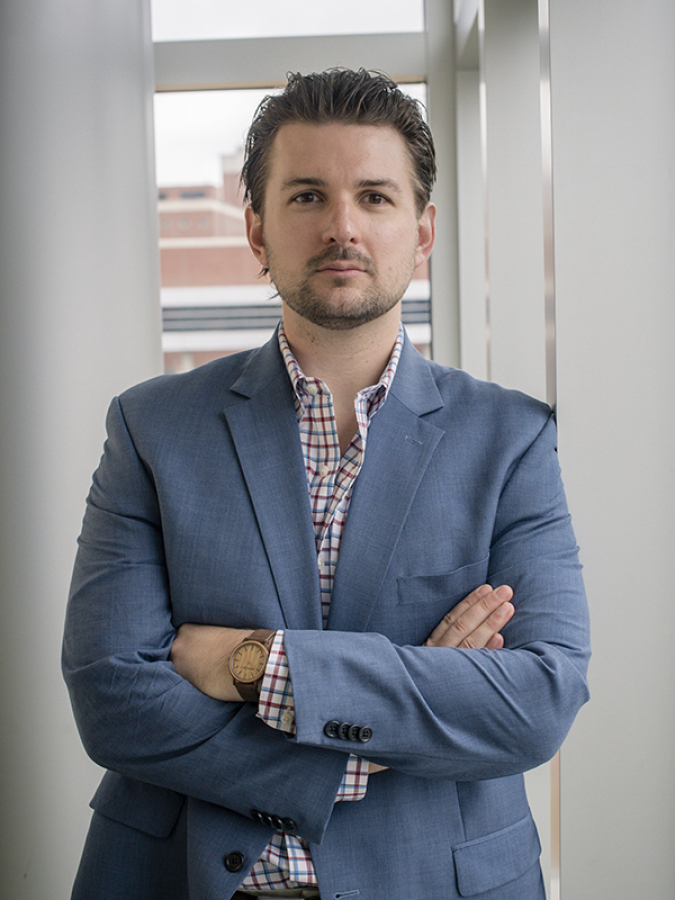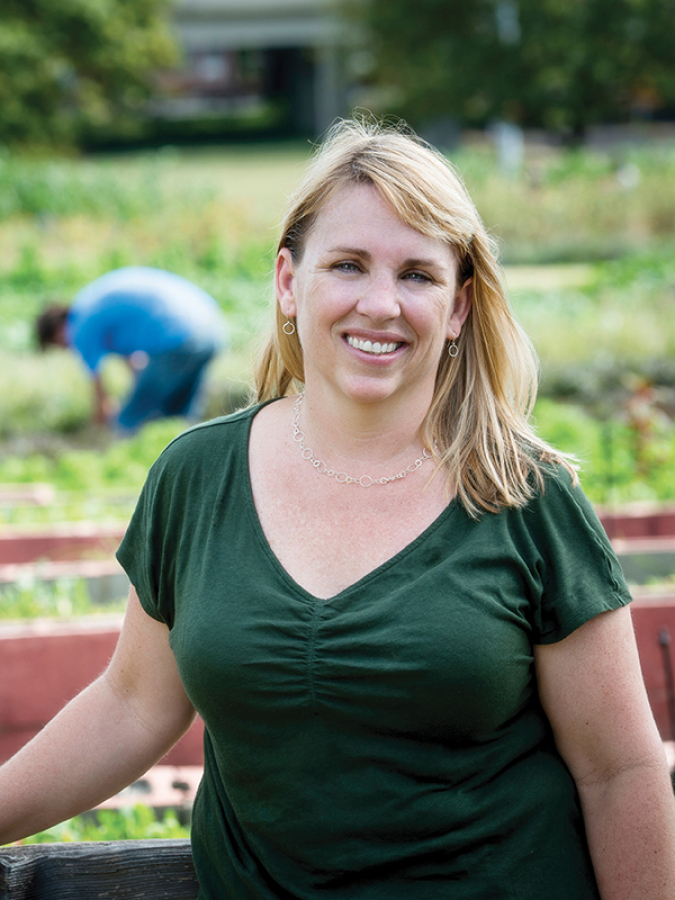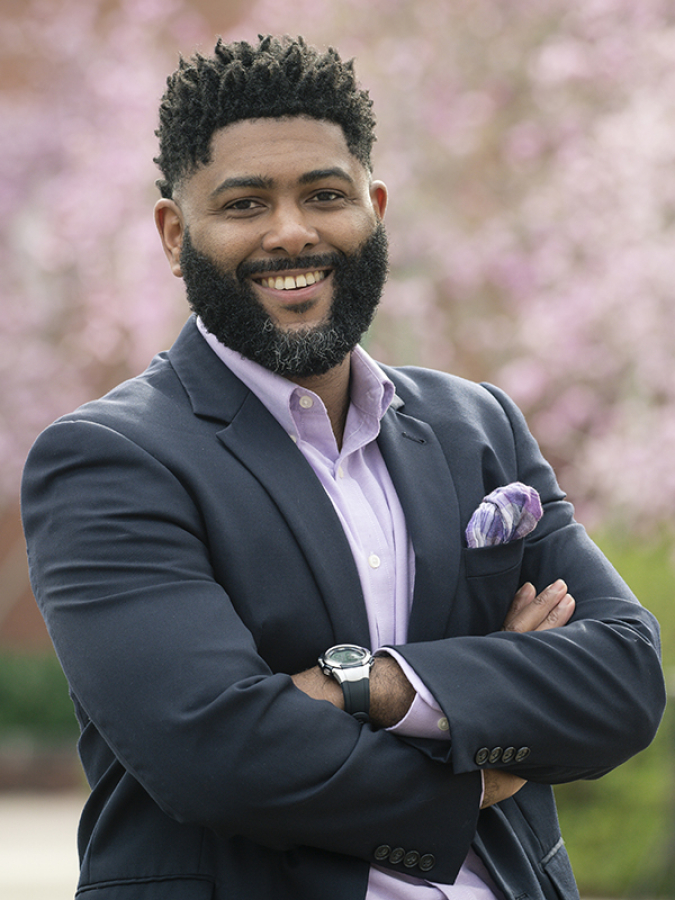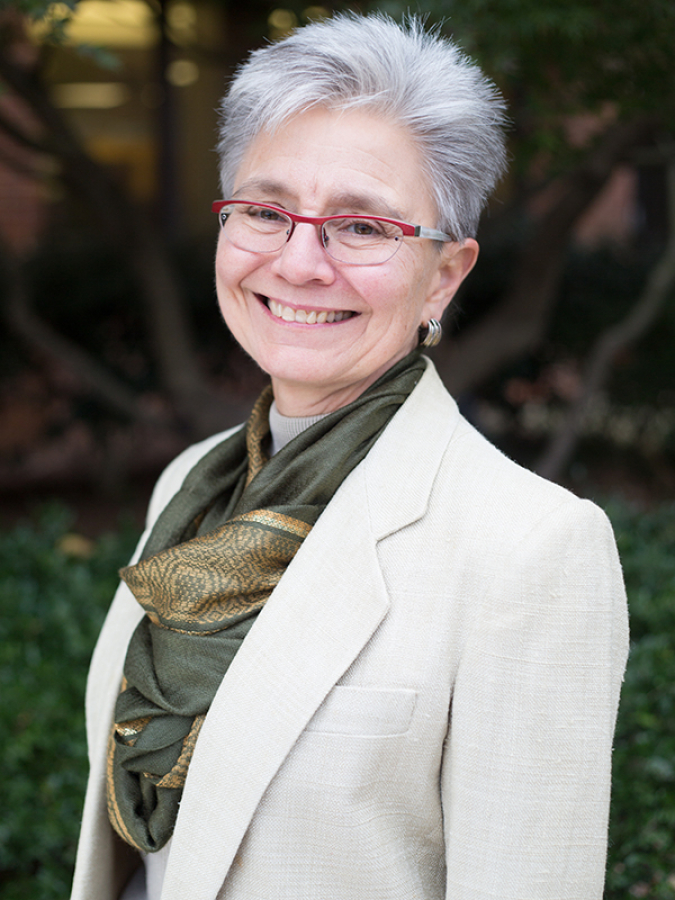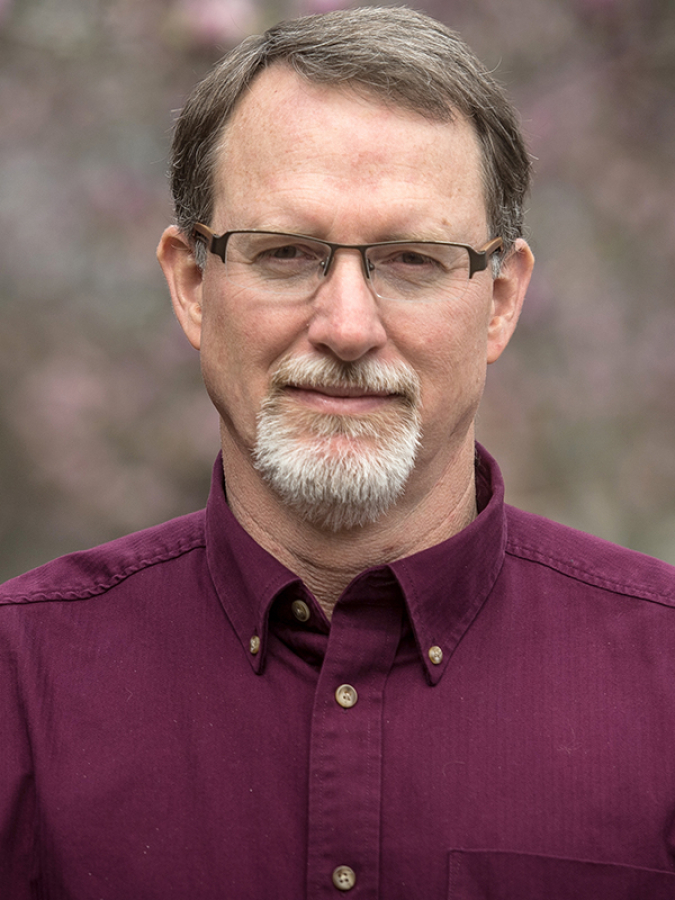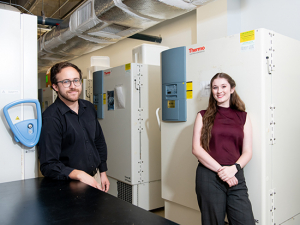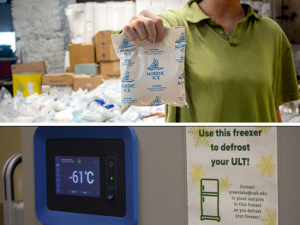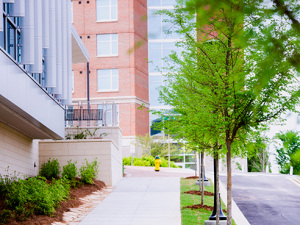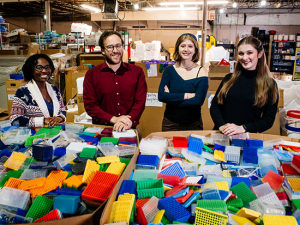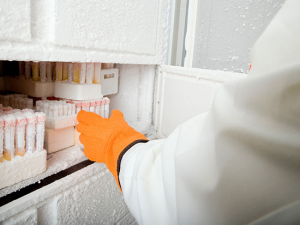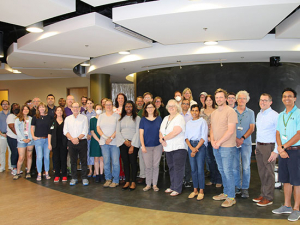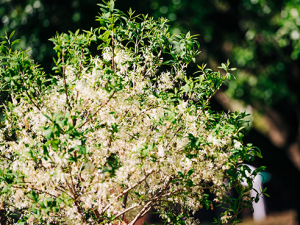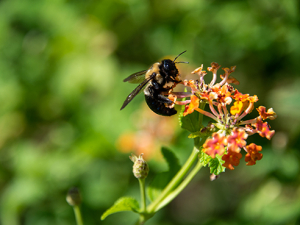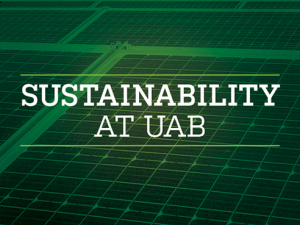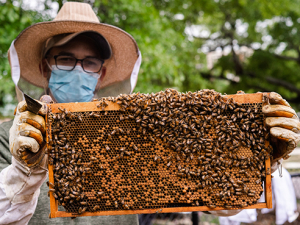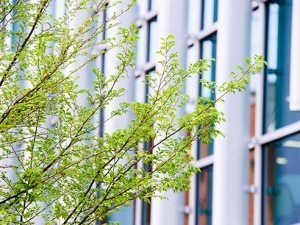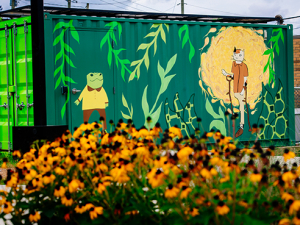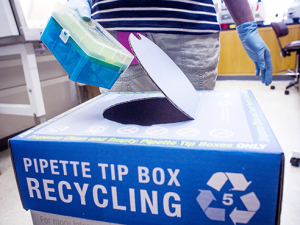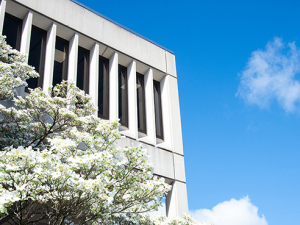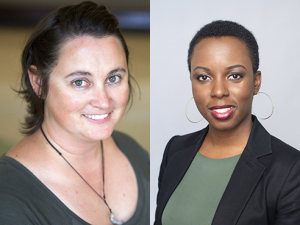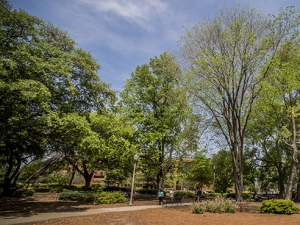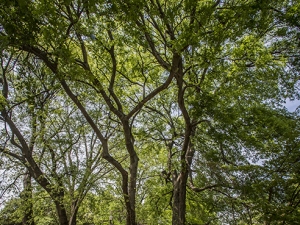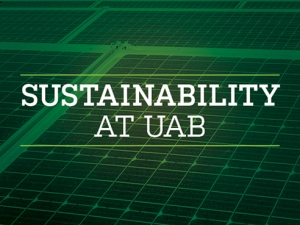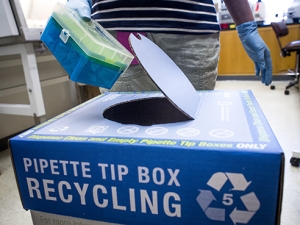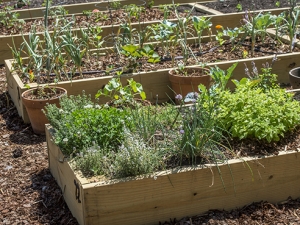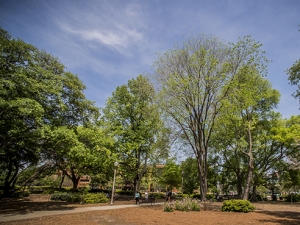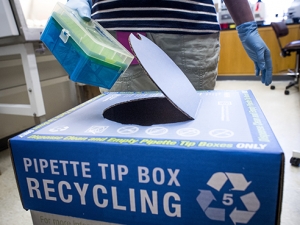UAB is no stranger to sustainable practices — its campus is home to electric car-charging stations, a rewarding alternative-commute program and dozens of labs dedicated to going greener. During the past year, the U.S. Department of Education named UAB a Green Ribbon School, the Cahaba River Society honored Express Lot No. 4 for its bioswales installation and the National Arbor Day Foundation named the university a Tree Campus USA for the fourth year running.
Encouraging faculty to integrate sustainability education into classrooms is an ongoing goal of UAB’s Red Mountain Project (RMP), a course-development grant program that helps faculty from various disciplines incorporate sustainability into new and existing curricula.
“Some faculty need time and the opportunity to reevaluate an existing course or create a new one to incorporate interdisciplinary content and service,” said Julie Price, manager of UAB Sustainability. “The RMP grants provide an opportunity to do that with sustainability, which reaches across many disciplines.”
More than 25 faculty — from English and government to biology, business and beyond — have received RMP grants since 2016 and built discussions of sustainability and its practices into their curriculum in a variety of ways. The courses appear on students’ transcripts with a sustainability (SUS) designation.
RMP grant recipients will attend a two-day workshop in May and take a half-day field trip in August. Faculty who present a new or altered course syllabus at the August meeting receive a $1,000 stipend.
Take a peek into eight new or adjusted courses made possible by the Red Mountain Project grants by clicking through the slideshow below, and apply before March 19 for a chance to earn a stipend to implement proposed changes.
-
Smarter policymaking
Pete Jones, Ph.D., assistant professor of Political Science and Public Administration, implemented a sustainability-themed project in MPA 607, "Quantitative Methods for Public Administration." One student worked with data from CommuteSmart to determine a person's likelihood to participate in the program based on how far they lived from work. In another, a student examined whether federal agencies with more workplace flexibility had less absenteeism and turnover and determined an employer can sustain its workforce by implementing a more flexible work environment. Another student studied sustaining a viable prison system by analyzing marijuana laws at the state level and reported less-stringent marijuana laws led to lower incarceration rates and reduced both the short-term funding burden and prison overcrowding.
"The sustainability aspect really challenged the students to think outside the box in how we typically consider sustainability," Jones said. "I thought it pushed them to do something interesting work." -
Literary review
Kieran Quinlan, Ph.D., professor of English, integrated discussions of sustainability into his EH 222 course, "British and Irish Literature 1800-Present," during the first round of the Red Mountain Project grants. The literature published during that time period is full of sustainable topics. Quinlan cites poet William Wordsworth as a prime example.
"He is a poet of nature who was writing just at the beginning of the Industrial Revolution and is concerned about what was going to happen," Quinlan said.
Quinlan also touches on authors such as Charles Dickens, whose novel "Hard Times" deals with the advent of industrial towns, dirt pollution and the migration of agricultural laborers into factories. The perk of using literature to discuss sustainability, Quinlan says, is that it helps introduce ideas without promoting political agendas.
"We're not alienating anyone because we aren't imposing something on the literature," he said. "We're talking about something that's already there." -
Life's little basics
Amy Badham, director of Service Learning and Undergraduate Research, developed PUH 333 in fall 2015, titled "Food, Water and Air" as a service-learning course that examines the most basic of environmental components and the related complex issues associated with sustainable human development, she said.
Students partner with community organizations such as the Coosa Riverkeeper, a citizen-based Coosa River conservation group, and GASP, a nonprofit organization that supports healthy and clean air, which help students develop a skill set for global citizenship that includes opportunities for advocacy, leadership and critical thinking.
Though Badham no longer teaches the course directly, she said she's proud its proven to be sustainable itself and that it continues to be a student favorite.
"This course empowers students to understand the difference they can make to protect the environment," she said. -
Old made new
For the past three years, students in ARS 101, "Intro to 2D Design," taught by Doug Baulos, assistant professor of drawing and bookmaking in the Department of Art and Art History, have created illustrations related to Earth Day and sustainability, silkscreen-printed them onto up-cycled T-shirts from thrift stores and then given them away as swag to students at UAB's Earth Day activities.
The class is well-known within the department, Baulos said, and has prepared many students to work on major projects with 501(c)3 organizations within the Birmingham community. He said students have created silkscreens for the Birmingham Audubon Society, Ruffner Mountain Nature Preserve and the Black Lives Matter movement, among others.
"Students know about the project before entering the class and even have ideas and themes of sustainability that they would like to talk about or depict," Baulos said. -
Save the turtles
Sami Raut, Ph.D., assistant professor in the Department of Biology, introduced discussions of sustainability into introductory courses BY 123 and 124 for biology majors and BY 101, a course for non-majors titled "Topics in Contemporary Biology." By training, Raut is an environmental toxicologist, which explains her passion for environmental sustainability issues, and the Red Mountain Project workshops gave her new ideas to be creative with her curriculum, she said.
In the non-majors courses, Raut tied sustainability to a service-learning module, and in BY 123, she encourages her students to use reusable glass bottles and forgo plastic straws, which don't biodegrade and are clogging sea turtles' nostrils in the ocean.
"It is quite eye-opening for the students to see the applicability of biology content into real life and how one can lead a sustainable lifestyle to reduce the global impact of plastic pollution," Raut said. -
A community focus
Anthony Hood, Ph.D., associate professor in the Collat School of Business, translated what he learned in the Red Mountain Project workshop into support for EMERGE, a leadership-development initiative from the Green Resource Center for Alabama. Hood is on the GRCA board of directors; EMERGE is the brainchild of Natalie Kelly, corporate responsibility manager for Brasfield & Gorrie, a construction engineering company headquartered in Birmingham.
EMERGE visited organizations in Birmingham to learn from leaders charged with championing sustainability-focused innovation in their organizations. The goal, according to their website, is to create "effective social entrepreneurs and change agents for healthier and more resilient organizations and communities."
"Through interactive demonstrations, lectures, hands-on projects and think-tank sessions, EMERGE participants gained a greater appreciation of the importance - and challenges - associated with managing business models focused on financial, environmental and social-value creation," Hood said. -
Sustainability abroad
Diane Tucker, Ph.D., professor in the Department of Psychology and director of the Science and Technology Honors Program, used her grant for two courses for honors students: "Introduction to the Scientific Process" (STH 199) and "Creating a Culture of Sustainability" (HC 395/STH 299).
In STH 199, students learn to read an original scientific paper by analyzing one that investigated the impact of a sustainable roof installations on water run-off and interior temperature mitigation. In HC 395/STH 299, students will pair sustainability education with a study-abroad trip to Iceland March 9-18, which Tucker is leading in conjunction with Associate Professor of English Cynthia Ryan, Ph.D., and some of her EH 102 students, who also benefited from a RMP grant.
Students will visit sites that can inform them about sustainable choices, develop a question or project that integrates the experience with local issues and prepare a publication reporting their analysis.
"We are excited to apply the perspective we learned in the Red Mountain Project in the study-abroad course," Tucker said. -
Silent stakeholders
Samuel Thompson, Ph.D., assistant professor in the Department of Management, Information Systems and Quantitative Methods, implemented sustainable content into IS 321, "Systems Analysis and Design," to teach students problem-solving approaches that emphasize identifying the requirements of many stakeholders.
Students learned about the triple bottom-line approach that focuses on people, profits and the planet and one that maximizes organizational outcomes.
Current students are using the 2013 Harvard Business Publishing case study "Better World Books: Social Entrepreneurship and the Triple Bottom Line." They analyze the case in project teams and then make recommendations, Thompson said.
"Even though it's a silent stakeholder, the natural environment that encompasses all human activities has requirements that should be included in project planning," Thompson said. -
Composition and balance
Cynthia Ryan, associate professor in the Department of English and director of the English Internship Program, implemented sustainability education into her EH 102 course this semester, giving students a choice of exploring two cases for a collaborative project. One addresses the toll on the environment in Iceland given the large number of visitors who travel there every year, and another focuses on balancing the need to maintaining fishing traditions of an indigenous tribe in the Amazon with preventing extinction of a species of dolphin.
During their explorations, students had to prioritize sustainability values while considering the opposing stakes of various parties, reviewing negotiation tactics and providing responses that would satisfy the greatest number of stakeholders. Some students will travel to Iceland with Diane Tucker's HC 395/STH 299 course to learn more about green efforts there.
"The Red Mountain Project introduced participants to the myriad ways in which we could incorporate sustainability issues and projects into our courses," Ryan said.
